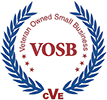
Buyers want to know ‘Why choose you?’
The first step in getting buyers to ask, “Why choose you?” is having prepared a value proposition, or unique selling proposition (USP) before your sales call. We also believe that it should precede the development of all your marketing communications for every target market. Using the diagram below, you need to differentiate between your offerings and those of your competition. Today, buyers are looking for brands that are unique and appeal directly to them.
For your offerings to fall into the high value area (Wow, please tell me more about…), they need to be:
- Unique to you
- Critically important to the buyer
- Credible with proof
So, this is what you should lead with. However, technical buyers also need to know which features match the competition (value parity area) and need development for content that resonates with and educates them. In our Developing a Personal Marketing Plan Workshop, we have adapted an approach from the Marketer’s Visual Tool Kit: Using Charts, Graphs, and Models for Strategic Planning and Problem Solving by Terry Richey.
- Identify the primary market segment.
- Select three or four distinctly competitive features (Last month, we specified that these should be based on the buyer’s selection cut-off criteria. In other words, what must haves are you looking for to make your buying decision?).
- Plot them on a matrix in their order of importance.
- Identify the benefits and advantages for each buying influencer.
- Summarize the top three or four advantages into a unique selling proposition.
It takes time to examine why your organization and products exist or are relevant to customers to effectively formulate these messages to the marketplace, as well as to employees to rally around them. We have found that Convince Them in 90 Seconds or Less: Make Instant Connections That Pay Off in Business and in Life by Nicholas Boothman offers insights and a process to distill your message in the most meaningful way.
Buyers want to know ‘Why change?’, first
In an effective sales process, you must first make the case for “Why change?” You need to grab the buyer’s attention, challenge current assumptions, and make a compelling business case to proceed. When the buyer cares enough to look further, you can continue on to why choose you. To ensure success, we suggest these steps:
- Create an opening statement to distill your disruptive business model or offering into a script.
- Craft questions to better understand the buyer’s application and begin the sales dialogue.
- Present your findings in order of the greatest impact to the buyer(s).
- Finalize with a proposal with why change, why choose you and what’s in it for the buyer(s).
- After the sale, obtain a testimonial or collaborate to write a case study as proof to support future sales.
How to pitch your value proposition
Once you have established a relationship, have some level of credibility with the buyer and have begun discussing the opportunity, then you must make help the buyer envision the changed state of affairs based on your solution. You must make it personal to the buyer. You must show, tell, demonstrate and/or paint a vivid picture of what’s in it for me (WII-FM). The more resistant a buyer is to change, the deeper you need to understand which motivations to appeal to:
- Desire for gain
- Fear of loss
- Comfort or convenience
- Security and protection
- Pride of ownership
- Satisfaction of emotion
Not only do you have to be excited about your solution and communicate it to the prospect, you have to make an emotional connection. One of the most effective ways to accomplish that is with stories, especially customer success stories that you can relate back to the buyer. According to Simon Sinek in Start with Why: How Great Leaders Inspire Everyone to Take Action, our brains have evolved to tune into and remember stories better than any other form of communication.
Key takeaways to build your uniqueness
Therefore, it is extremely important to differentiate your offerings by focusing on their uniqueness and benefit to the prospective buyer to overcome ‘me too’ in the marketplace. But first, make the emotional connection to the executive to provoke enough thought to open the door to invite you in. Make your pitch personal and support it with compelling status-quo busting messages, which have been used during the buying cycle and on the web, and ensured your reps know how to appeal to today’s savvy – but still human buyers. This is where Tempest can help you with your planning and branding content development. Contact us for information about our Marketing Planning and Marketing Communication Workshops.
In the next blog, we will focus how to take your newly created Value or Unique Selling Propositions (USP) and embed them into your messages during the buying cycle.
